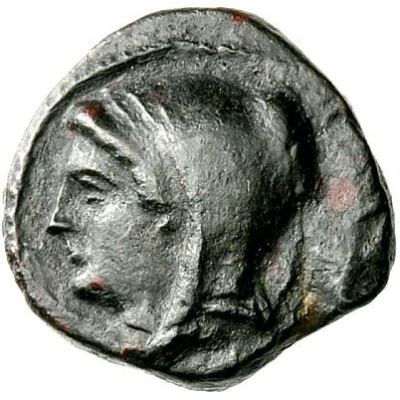


© Nomos AG
Chalkon 302 BC - 286 BC
| Bronze | 2.06 g | 13.0 mm |
| Issuer | Thebai (Thessaly) |
|---|---|
| Type | Standard circulation coin |
| Years | 302 BC - 286 BC |
| Value | Chalkon (1⁄48) |
| Currency | Drachm |
| Composition | Bronze |
| Weight | 2.06 g |
| Diameter | 13.0 mm |
| Shape | Round (irregular) |
| Technique | Hammered |
| Demonetized | Yes |
| Updated | 2024-10-10 |
| Numista | N#170842 |
|---|---|
| Rarity index | 100% |
Reverse
Ethnic within laurel wreath tied at the bottom
Script: Greek
Lettering: ΘΗ
Comment
Apparently unpublished and possibly unique.
Interesting fact
The Chalkon coin was used as a form of currency in the ancient city of Thebai (now known as Thessaly) during the 4th century BC. Despite being made of bronze, which was a common material for coins at the time, the Chalkon coin was relatively lightweight, weighing only 2.06 grams. This makes it one of the lightest coins ever produced in ancient Greece.